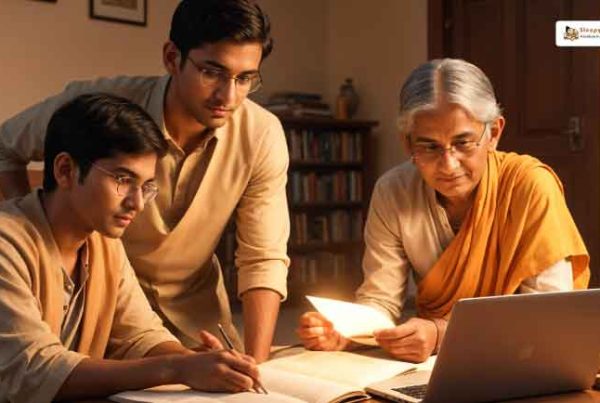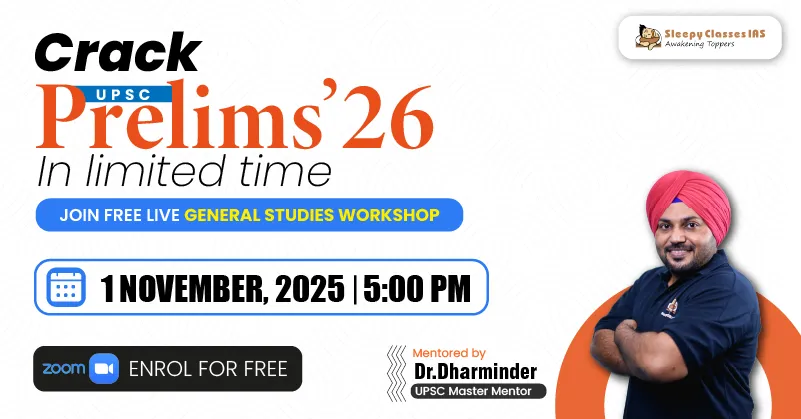Question 1
Geography | Hydropower Projects | Easy | The Hindu
SOURCE
Consider the following pairs (Hydropower projects and states)
Chamera Hydroelectric Project – J&K
Koyna Hydroelectric Project – Gujarat
Indira Sagar Hydroelectric Project – Madhya Pradesh
How many pairs is or are correctly matched?
A. Only one
B. Only two
C. All three
D. None of the above
Solution & Detailed Explanation
Answer: (A) Only one
Detailed Explanation
- Chamera Hydroelectric Project – Himachal Pradesh: Ravi
- Koyna Hydroelectric Project – Maharashtra: Koyna
- Indira Sagar Hydroelectric Project – Madhya Pradesh: Narmada
Question 2
International Relations | Indus Water Treaty | Medium | the Hindu
SOURCE
Consider the following:
1. Kishanganga River is the tributary of Chenab.
2. According to the provisions of the Indus Waters Treaty, the involvement of either a neutral expert or the Court of Arbitration is mutually exclusive.
Which of the statements above is or are correct?
A. 1 only
B. 2 only
C. Both 1 and 2
D. None of the above
Solution & Detailed Explanation
Answer: (B) 2 only
Detailed Explanation
- Kishanganga River is the tributary of Jhelum.

- According to the Indus Waters Treaty, the involvement of a neutral expert and the Court of Arbitration are mutually exclusive for the same set of issues. This means that if a dispute is being handled by a neutral expert, it cannot be simultaneously addressed by a Court of Arbitration, and vice versa.
- Neutral Expert: The Treaty outlines a process where disputes are first addressed by the Permanent Indus Commission. If the Commission can’t resolve the issue, either party can request a neutral expert to examine the matter.
- Court of Arbitration: A Court of Arbitration is established only when the Permanent Indus Commission fails to reach an agreement and when either both parties agree on the need for legal interpretation or the neutral expert refers the matter to the court.
- Mutual Exclusivity: The treaty explicitly states that the provisions for a Court of Arbitration do not apply while a neutral expert is handling the same dispute. India has consistently maintained this position and has refused to participate in parallel Court of Arbitration proceedings when a neutral expert is already involved.
Question 3
Science and Technology | Computers | Easy | The Hindu
SOURCE
Consider the following:
1. Cert-In has been operational since 2008.
2. Cert-In is the national Nodal Agency for Computer Security Events in India.
Which of the statements above is or are correct?
A. 1 only
B. 2 only
C. Both 1 and 2
D. None of the above
Solution & Detailed Explanation
Answer: (B) 2 only
Detailed Explanation

Question 4
Science and Technology | AI | Medium | The Hindu
SOURCE
As per UN, AI can support advancements in how many of the following SDGs:
A. SDG 2
B. SDG 3
C. SDG 15
D. All of the above
Solution & Detailed Explanation
Answer: (D) All of the above
Detailed Explanation
- In all these spheres and more, AI has significant potential to support the UN by promoting inclusivity, reducing inequalities, helping to accelerate nearly 80% of the Sustainable Development Goals (SDGs) and strengthening the work of the United Nations system.
- For example, AI could support advancements in the SDGs by providing diagnostics and predictive analytics in healthcare (SDG 3); crop monitoring and climate resilience in agriculture (SDGs 2 and 15); personalized learning in education (SDG 4) and crisis mapping and aid distribution for humanitarian response.
- But AI isn’t just a game changer for sustainable development. It can help the UN respond to crises around the world, help nations collaborate to address climate-induced displacement, and become a force for good and save lives.

Question 5
International Relations | International Organisations | Easy | The Hindu
SOURCE
Which nations among the following is not the founding members of the EU (during formal recognition)?
A. Portugal
B. Spain
C. Latvia
D. Luxembourg
Solution & Detailed Explanation
Answer: (C) Latvia
Detailed Explanation
- On 31 December 1994, the EU had 12 Member States: Belgium, Denmark, Germany, Ireland, Greece, Spain, France, Italy, Luxembourg, the Netherlands, Portugal and the United Kingdom.
- From January 1995, the EU added three Member States: Austria, Finland and Sweden.
Question 6
Environment | Renewable Energy | Medium | The Hindu
SOURCE
Consider the following pairs: (Hydrogen and Process)
Steam Reforming – Turquoise Hydrogen
Methane Pyrolysis – Blue Hydrogen
Electrolysis – Green Hydrogen
How many pairs is or are correctly matched?
A. Only one
B. Only two
C. All three
D. None of the above
Solution & Detailed Explanation
Answer: (A) Only one
Detailed Explanation

Question 7
History | Indian National Movement | Medium | The Hindu
SOURCE
Arrange the following events chronologically :
A. Lahore Session and the demand for Purna Swaraj
B. On 26 January Gandhiji promoted to celebrate independence day in a traditional way
C. The Salt March begins
D. Salt was made by Gandhiji and salt law was broken at Dandi
E. Gandhi – Irwin Pact signed
Choose the correct answer from the options given below :
A. (B), (C), (D), (E), (A)
B. (C), (D), (E), (A), (B)
C. (A), (B), (C), (D), (E)
D. (D), (E), (A), (B), (C)
Solution & Detailed Explanation
Answer: (C) (A), (B), (C), (D), (E)
Detailed Explanation

Question 8
Geography | GLOFs | Medium | The Hindu
SOURCE
Consider the following:
1. Rise in the riverbed level causes reduction in the carrying capacity of the river.
2. As per India’s National Remote Sensing Centre, the Indian Himalayan Region (IHR) is home to 11 river basins and 28,000 glacial lakes.
Which of the statements above is or are correct?
A. 1 only
B. 2 only
C. Both 1 and 2
D. None of the above
Solution & Detailed Explanation
Answer: (C) Both 1 and 2
Detailed Explanation
- The carrying capacity of a river refers to the maximum number of activities (biological, developmental, agricultural, and industrial) that a river ecosystem can sustainably support without damaging its ecological health and balance. This capacity considers both the ability of the river to assimilate waste and the availability of resources for various uses.
- Rise in the riverbed level causes reduction in the carrying capacity of the river. An increase in the riverbed level directly reduces a river’s capacity to carry water and sediment. This happens because the river channel’s volume is effectively reduced when the riverbed rises, meaning there’s less space for water to flow, especially during high-flow events like floods.

- As per India’s National Remote Sensing Centre, the Indian Himalayan Region (IHR) is home to 11 river basins and 28,000 glacial lakes. NRSC has been actively involved in mapping and monitoring these glacial lakes using satellite remote sensing data, particularly in the context of potential Glacial Lake Outburst Floods (GLOFs).









